Missionfriends of Hamilton County, Nebraska
Aurora, Nebraska, was well known to Nebraska Covenanters even before their beloved son, Glenn Palmberg became President of the Covenant. O.M. Nelson's 1927 booklet, "Swedes in Nebraska", reminds us that the Swedish population in Hamilton County was located northwest of Aurora and was less associated with the town itself than with the title, "Princeton settlement." Since Princeton, Illinois, was our home for the better part of 1969 this is of special interest to us. Therein hangs quite a tale.
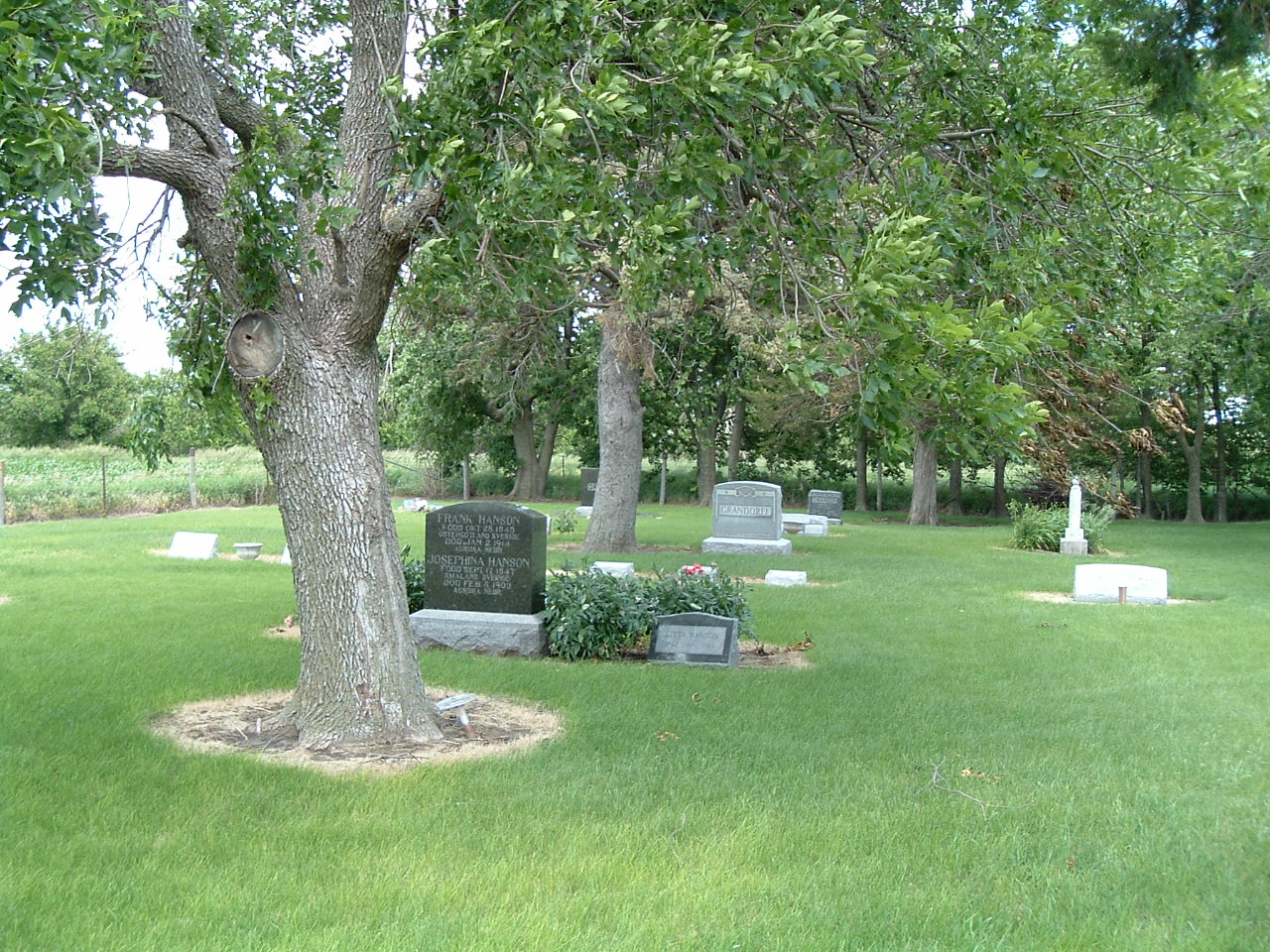
Another Missionfriend cemetery; another story
The center of the Princeton settlement was Siloa church, now gone but adjacent to the cemetery shown above. Skogsbergh visited Siloa and located his parents and brother in the settlement. We were disappointed to find no gravesites marked with that name at Siloa, or at Aurora nearby, so more research needs to be done in that regard. We did find the gravesite of Pastor Norsen, a name less familiar, and went to the 1912 history "Nebraska Missionförening i ord och bild" to learn more.
In 1878 the Mission Synod held its annual meeting at Bethesda, Malmo, Nebraska, up in Saunders County. The delegate from Princeton was Edw. Johnson. While they were in Nebraska, a group traveled down to Hamilton County to "spy out the land." We are fortunate that the book tells who went, for this is very illuminating. Among the "spies" were both Rylander and Hallgren, the developers of the Phelps County settlement, John Peterson and E.A. Skogsbergh. We might say that the interests of real estate and revivals were equally represented! Between 1880 and 1882 the following families had left Princeton to enter this "promised land": the same Edw. Johnson, A.P. Moberg, Svan Youngquist, Olaus Anderson, K.P.Swenson, Alfred Swenson "and others." Soon others came from Chicago settling to the westward in an area that became known as the "Chicago settlement."
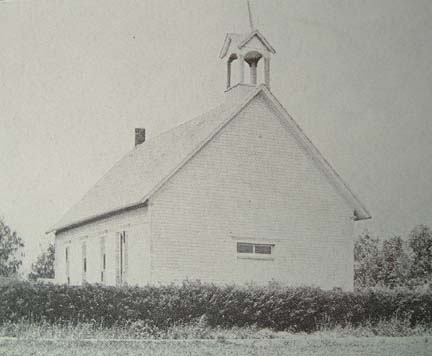
Siloa
The newcomers were something of a "mixed bag." We can assume that the Princetonians were supporters of the Mission Synod since their church had been at the heart of its formation. We know that Rylander and Hallgren were of the Martenson-Princell circle, who advocated the non-denominational form of independent local churches...the "free." Indeed, insofar as we can determine, this tension emerged soon and lasted long at Siloa. Both the Covenant history of 1912 and the Free Church Golden Jubilee history include Siloa, but with some blank spots.
The Covenant book reports that in 1883 a Swedish Evangelical Lutheran Mission Congregation was formed with the Mission Synod's prescribed constitution. The first board was chaired by Edw. Johnson, with A.P. Moberg as vice chairman and both Alfred and K.P. Swanson as deacons. This clearly was the Princeton group. The church followed the Mission Synod into the Mission Covenant at its formation in 1885. At some point the leaders must have looked back and found not everyone following. These dissenters are described as following the themes of Chicago-Bladet by the Covenant historian.
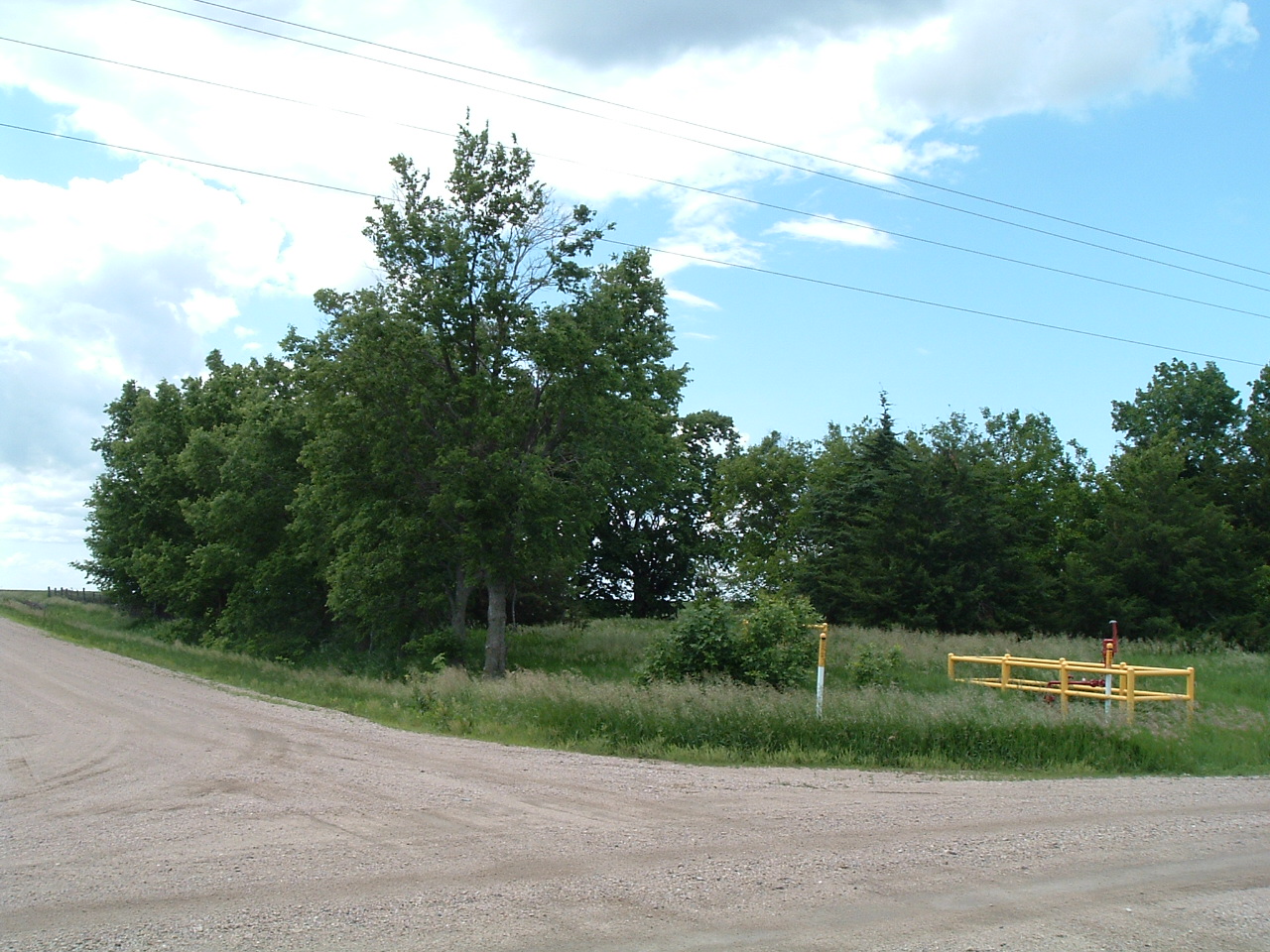
Siloa corner: once stormy, now very peaceful
From the Free point of view, the picture is of a Mission congregation which is visited by itinerating evangelists who are themselves an interesting roster of Missionfriend names. There is no need of, nor mention of, denominational machinations. Remarkably the first on the list is C.J. Nyvall, whose 1876 visit we shall return to later. The Covenant historian does not mention him. E.A. Skogsbergh comes next. He ranks third on the "Covenant list" and there is no mention of his family presence. Prominent Covenanters A. Lidman and John Peterson continue the "Free list" but surprisingly do not appear on the Covenant's.
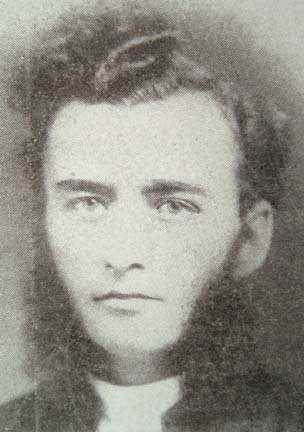
A. N. Sweders
The next entry on the Free list ranks first on the Covenant list, and is a figure worthy of some further examination: A.N. Sweders. Sweders, whose impressive gravestone at Stromsburg marks the place of his retirement, was sent to Polk county to the Swede Home Lutheran congregation under the auspices of the Nebraska Augustana Lutheran Conference. He had immigrated in the company of prominent Augustana figure, T.N. Hasselquist. Both brought "new ideas" to their churchmanship. Hasselquist had displayed the style of preaching at Galesburg which forsook the robes of priesthood and even the fixed pericope; he was said to have interspersed his sermons with gospel songs. At the urging of his peers, he later conformed to more approved Augustana practices. Sweders, we may presume, was equally "free" and is known to have gone one step further...he believed that only regenerate members should constitute the church and enjoy the benefits of the sacraments.
At Swede Home this conviction met with opposition and censure. A letter of counsel from his old friend Hasselquist survives in the Hasselquist biography. C.F. Sandahl, the Swede Home historian, reports that Sweders had also met with a group of Missionfriends in nearby Stromsburg and aided them in founding a church on a lot which had been meant for a Lutheran church. In fairness it should be said that "Lutheran" was still part of the Missionfriend's official church title, but it was a fading banner. Leaving Swede Home, Sweders went to Boone, Iowa, where he presided over the rare event of a free mission faction taking over an existing Augustana church, lock, stock, and belltower. He was promptly defrocked then by the longsuffering Lutherans. He served as first Mission Synod pastor at Mead and as traveling missionary for Nebraska in which capacity his Siloa visit was probably made. In recent findings we can place him even at our hometown, Wausa.
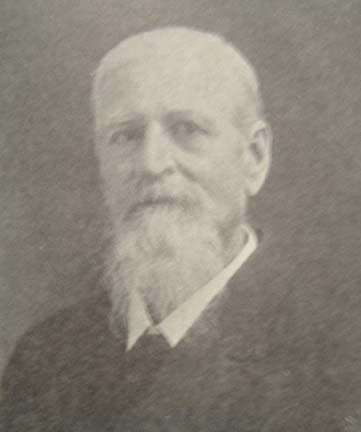
C. A. Falk
The next on the Free list is C.A. Falk. We trace his pilgrimage from Essex, Iowa, to Hasselquist's Paxton school, to Ansgar College and to Stromsburg where he was the first permanent pastor among the Missionfriends there. Like Sweders, he was on a trajectory that took him all the way to the Free Church. These were not necessarily influences which at Siloa would have anchored the Swedes to the Björk and Hallner party back home in Illinois.
Next is L.L. Frisk. It is an enigma how the first Swedish Baptist Pastor in Chicago came to Siloa, but even more mystifying how he came to serve as permanent pastor at the Mission Church at Stromsburg when there was a thriving Swedish Baptist congregation in the same town. It reminds us that in the thinking of Free founder Franson, members of all denominations could gather under this banner without discrimination or embarrassment about how and when one was baptised, for instance. And such a congregation could and did feel free to call a pastor from any denomination should they chose to do so. M.E. Peterson writes in a Stromsburg memoir with some glee that the church had called him thinking he was "a Free." Both Stromsburg and Siloa seem to be following this practice.
Returning to the Covenant list, the second visiting pastor mentioned is Peter Wedin. Our earliest document relating to Wedin is from the Sunnerbo Mission Society in Sweden. Karl Olsson reports that he had a strange delivery. He was pastor at Princeton when Skogsbergh's revival meetings there eventuated in the doubling of the congregation's size. It also may have changed the character of the church to a degree unacceptable to Wedin. He left and affiliated himself with the Augustana Synod. There was indeed an "ebb and flow." He was an itinerant pastor, we believe for the latter group, in Nebraska and served a congregation at Ong. The Free list ends with Edw. Johnson, who may have served as lay pastor in the absence of a permanent one. The Covenant list ends with P.A. Malm, of whom we have this interesting insight from Sandahl:
Rev. P.A. Malm was ordained by Augustana in 1889 and was called to the Saron congregation in Saronville, south in Clay County. "Before coming to this country, he had been one of the most prominent lay preachers in Sweden, of the strictly Lutheran type. From personal knowledge of him the writer ventures to state that few men have been so well grounded in the Scripture and Lutheran doctrine of the atonement and justification by faith as was Rev. Malm, and few could present them in so clear and comprehensible a way as he. Those of us who were present at the 1917 Conference meeting in Saronville can never forget his powerful message on the atonement. There was certainly nothing left of the so-called Waldenströmian doctrine when he was through with it." If it had been the purpose of the Siloans to call pastors of various doctrinal points of view, evidently the Lutheran side had been well represented!
We now return to C.J. Nyvall's 1876 travel records for some verbatim accounts: "Some 150 miles farther west some Swedish settlements (the book inserts "Swedeburg" but we believe it is Siloa) had requested a visit from me and since I felt especially inclined to visit Swedish settlers having no minister, as was the case here, I decided to go out there although I was a little worried about getting to the right place for I did not know anyone and had no address to which I could send a letter. On the way I prayed to my heavenly Father asking his aid, and just as I stepped off the train I was received by a couple of Swedes who, without knowing why, had felt impelled to go to the station. When they now heard my errand they greeted me with a warm welcome. This was a Saturday evening, but a message was sent abroad so that on Sunday morning quite a number of people gathered for a prayer session in the schoolhouse. In the afternoon I spoke in another schoolhouse. It is a good arrangement in America that as soon as an area is being settled a certain parcel of land is set aside for school purposes, and when schoolhouses are built people can gather around the Word of God in them until they are able or have time to build a church."
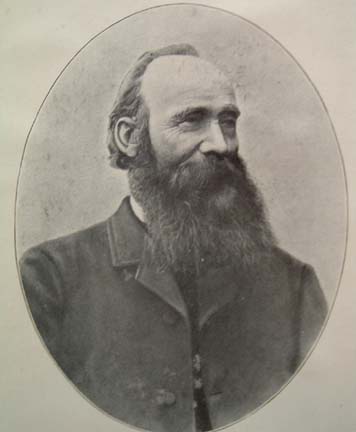
The amazing traveler C. J. Nyvall
After the delay of a Nebraska snowstorm, Nyvall continues: "On Tuesday we had sunshine and good weather again, and since the train was not leaving till six o'clock in the afternoon, we had another prayer meeting when even more people attended than at the previous ones. There I saw once more how party strife can close the hearts of men to the Word. In this place there was no minister, but they had been visited by Methodist and Baptist preachers. An Augustana minister also visited them from time to time, but when he heard that they had attended meetings held by the mentioned preachers, he assumed a very haughty attitude and began to speak about heresy and heretics so that some people became irritated enough to declare they never again wanted to listen to such a trouble-maker." He then leaves for Kearney.
The scene is clear and typical, but there are some chronology problems. If Nyvall is there in '76, we are some time before the Princetonians come. On the other hand, it is very likely that Rylander and Hallgren are not on their first trip there when the Princetonians make their visit. The development may very well have been underway for some time. The offending Augustana pastor might suggest Wedin, but he would still have been in Princeton at that time. In any case, when he did come, he must have met some familiar faces from his Illinois days.
The issue is by no means clear, but we have already an indication of two locations, two schoolhouses, and by the 1886 call to C.M. Youngquist to Siloa it is for the express purpose of joining "the two" groups into one. It is also clear that by 1889 he leaves without having achieved the goal. He is listed as "part-time" pastor by the Free history for 1887-8, but they have already called their first full-time pastor, M. Lofdal, in 1886. From then on a succession of ministers include Free stalwarts Halleen and Wicksell and the division becomes permanent. In the northeast corner of the county is another mission church which Youngquist served; the Mamre congregation. (we once heard the question asked, "why would anyone name a church 'mammary'?) This church is also described as becoming a free congregation in the Siloa story, yet it does not appear in the Golden Jubilee history of the Free church. Here it might be asked whether some congregations have simply disappeared from historical records. Strict independence might have restrained some from entering their names on any denominational rolls at all. Did this happen at Mamre?
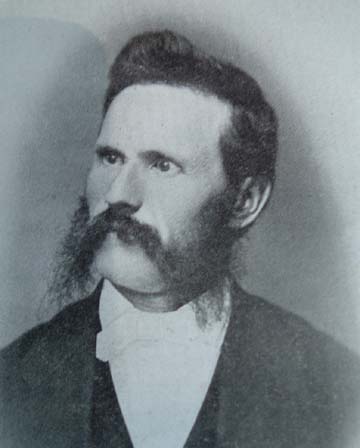
Pastor Gören Ingermansson Norsen
In 1890 G. Norsen came to Siloa and was to remain for ten years a much appreciated pastor. His name appears on the rolls of the Ahlberg School for lay ministers in Sweden. He is remembered as singer and poet as well as faithful teacher of the flock. During his stay, a parsonage was constructed on 3 acres of land. He completed his earthly tasks here on the rolling plains of Hamilton County. Succeeding him were J. Johnson, E. Berg, J. Lindgren and N.A. Blomstrand, bringing us up to the 1912 date. Karl Olsson has translated one of Norsen's poems in By One Spirit:
Is not so quickly set free;
But I cannot slight the Savior
Who gave liberation to me.
Listen, all you who give counsel,
How one must grovel and pray,
All is forgiven - forgiven!
This is the gospel for aye.
From the same source we learn that Norsen was one of five mission pastors from the Kronoberg region in Sweden: the others are; C.P. Mellgren, P. Wedin, J.P. Lindell, Johan Gustafson, J.G. Princell and August Pohl.
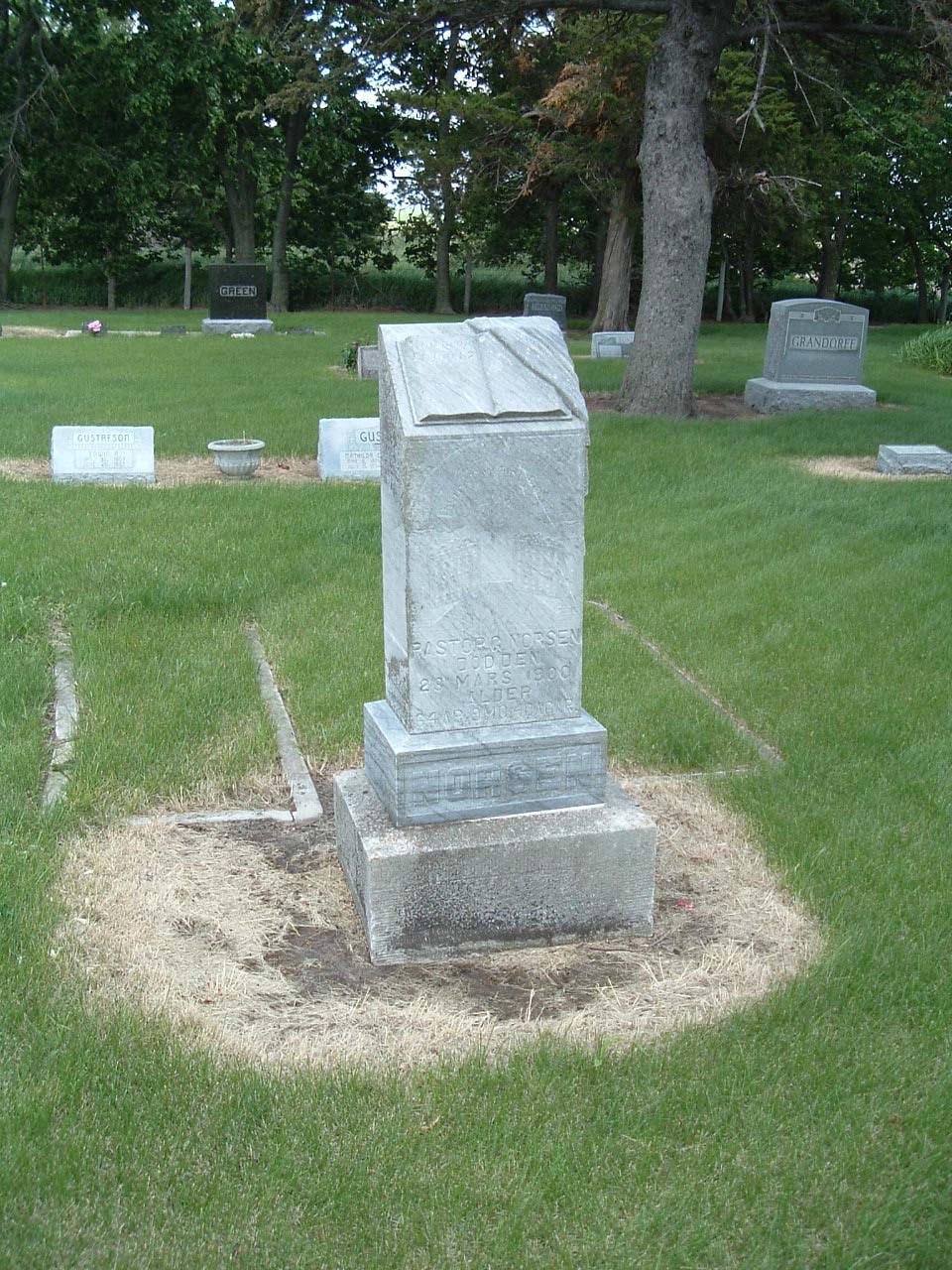
Siloa Pastor G. Norsen's monument: a Bible open to I John 1:7
Since we have had occasion to mention Clay County to the south, it is interesting to trace the church histories of the Swedish communities there. Saronville, originally called Huxley, was occupied by Swedes in the early 70's. Omaha Augustana Pastor J.S. Benzon is said by Sandahl to have organized a congregation there on a visit in 1872. Augustana visits were few and far between, but clearly a Swedish Methodist group was active as well. In O.M. Nelson's "Swedes in Nebraska", 1927, the Methodist church is said to be the oldest, with 120 members. The Lutherans are said to have 184 at that time. The line of Swedish Methodist groups across southern Nebraska seems to continue a similar line across Iowa: New Sweden, Muchakinock, Creston, Red Oak, and in Nebraska; Saronville, Sutton, Shickley, Ong, and Axtell. Peter Lindquist was the Swedish Methodist mission pastor for Nebraska in 1872.
Sandahl recalls the experience of veteran Augustana Pastor J. Torell who came to Saron/Stockholm as his first call. The rivalry between church groups was real. At the time, meetings were held in one of two schoolhouses. When Torell and guest Pastor Tornquist arrived at the schoolhouse the door was locked; "The deacon who had the key to the schoolhouse had gone to a meeting of another denomination so they had to break open the door." In 1888 Augustana ordained Rev. A.G. Freden to serve Saron and Kearney. He is said to have previously served "a Mission church at Verona." Nelson places a small church there, now inactive. Stockholm is another old rural Swede center nearby which by '27 had 245 Lutheran communicants. In 1875 when an Augustana organization was effected, a number of Swedish Methodists left to form their own church. Nearby Shickley is said by Nelson to have Mission and Methodist churches, but the latter claiming only twelve members.
Each of these Swedish communities was settled along the railroad by people from the old Swedish centers in Illinois, which makes one think that land agents such as Rylander and Hallgren played a role in the development. There were over 1,000 Swedes in Clay County by 1910. The town of Edgar had an Augustana congregation served at times by the Saron pastor. In 1922 the congregation moved to Ong, where a Methodist congregation of 94 (1927) also existed. It was the Ong church that Peter Wedin served. Sandahl says, "Wedin had been a former pastor of the Mission Covenant and joined our Synod in 1889. He was a good, conscientious Christian of the old pietistic type and an edifying preacher but a somewhat eccentric character. The Nebraska Conference employed him for some time as an intinerant preacher which he was best fitted for. He never held any other charge but Gethsemane and that only for a short time. He died April 11, 1907."